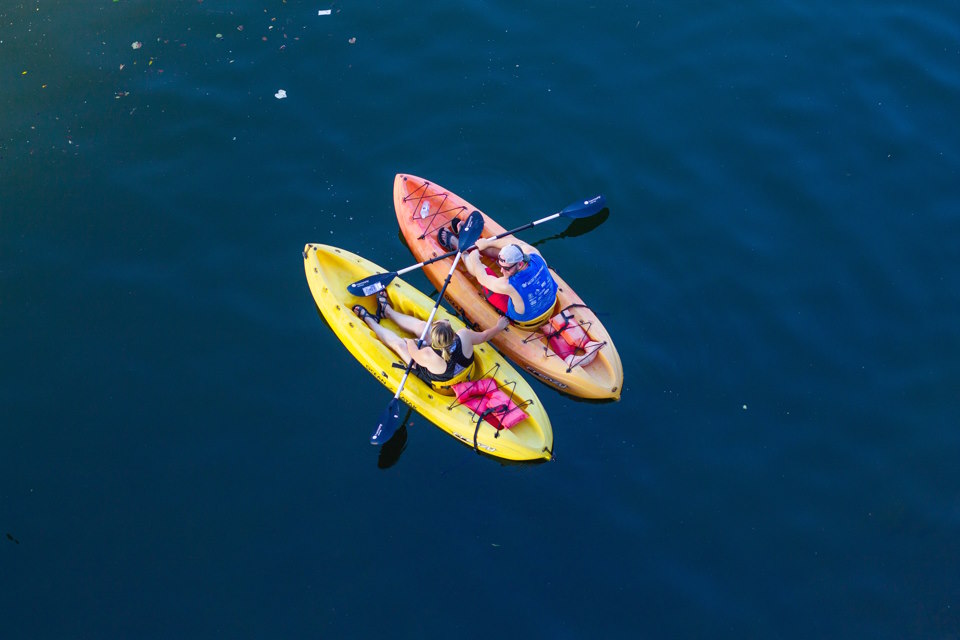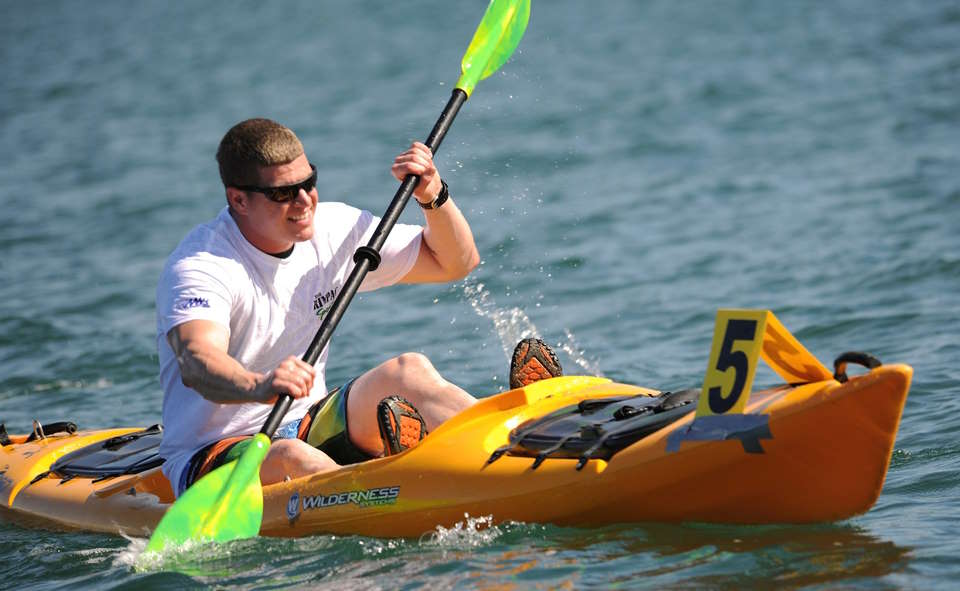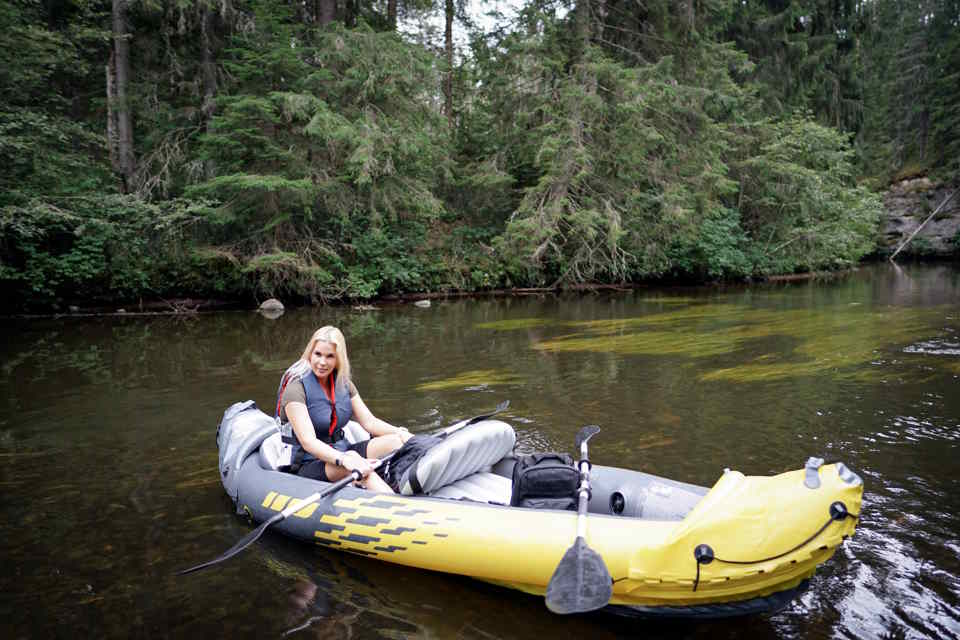Welcome, adventurers, to the exhilarating world of kayaking! Whether you’re seeking a thrilling outdoor experience, a way to connect with nature, or simply a fun and rewarding form of exercise, kayaking has it all. This beginner’s guide is designed to equip you with essential knowledge and techniques to confidently embark on your kayaking journey. From understanding the initial challenges to immersing yourself in the first rule of kayaking, we will cover everything you need to know. So, let’s dive in and discover the joy of kayaking while making your first strokes an experience to remember!
Introduction

Kayaking is an exciting water sport that can be enjoyed by people of all ages and skill levels. Whether you are a beginner or have some experience, learning the basics of kayaking is essential to ensure a safe and enjoyable experience on the water. We will discuss how to kayak for beginners and provide you with some useful tips to get started on your kayaking adventure.
Getting Started:
- Choose the Right Kayak: Before you begin kayaking, it is important to select the right kayak for your skill level and type of water you will be paddling on. There are different types of kayaks such as recreational, touring, and whitewater. Recreational kayaks are great for beginners as they are stable and easy to maneuver.
- Wear the Right Gear: Safety should always be a priority when kayaking. It is essential to wear a properly fitted personal flotation device (PFD) at all times. Additionally, make sure to wear weather-appropriate clothing and protective gear, such as a helmet for whitewater kayaking.
- Learn the Proper Paddling Techniques: Paddling is the most fundamental skill in kayaking. Start by gripping the paddle with both hands, keeping them shoulder-width apart. Use your core muscles to rotate your torso and generate power for each stroke. Remember to keep your arms straight and avoid straining your shoulders.
Basic Kayaking Tips:
- Start in Calm Waters: As a beginner, it is best to start kayaking in calm and flat waters. This will allow you to practice your paddling techniques and get comfortable with the kayak’s movements before venturing into more challenging conditions.
- Practice Rescues: It is important to be prepared for unexpected situations while kayaking. Practice self-rescues and assisted rescues with a partner before going on longer trips. Knowing how to get back into your kayak or assist someone else can be a lifesaving skill.
Is Kayaking Hard for Beginners?

Is kayaking hard for beginners? This is a common question asked by those who are interested in taking up this water sport. The answer to this question depends on various factors, including the individual’s physical fitness level, previous experience with similar activities, and the type of kayaking they intend to do. While kayaking can be challenging at first, with the right guidance and practice, even beginners can quickly learn and enjoy this exciting outdoor activity.
One of the factors that determine the difficulty level of kayaking for beginners is the type of water they will be paddling in. Beginners are advised to start in calm and flat waters such as lakes or slow-moving rivers. These conditions are ideal for practicing basic kayaking techniques and gaining confidence on the water. As beginners become more comfortable, they can gradually progress to more challenging conditions, such as whitewater kayaking or coastal paddling.

Another aspect that affects the difficulty of kayaking for beginners is learning the proper technique. It is advisable for beginners to take a kayaking lesson or join a guided tour, where they can learn from experienced instructors. Learning the correct paddle strokes, how to maneuver the kayak, and how to ensure safety on the water are essential for beginners to have an enjoyable and safe experience. Practice and repetition will help beginners develop muscle memory and improve their kayaking skills over time.
- Physical fitness is also an important consideration when determining the difficulty level of kayaking for beginners. While kayaking can provide a great workout, it does require some physical strength and endurance. However, beginners don’t need to be professional athletes to enjoy kayaking. Start with shorter paddling sessions, gradually increasing the duration and intensity of your outings as your fitness level improves. Regular exercise and conditioning outside of kayaking can also help in building the necessary strength and stamina.
- Equipment selection is another aspect that can affect the difficulty level for beginners. Choosing the right kayak and gear that suits the individual’s body type and intended use can make a significant difference in comfort and performance. It is important to have a properly fitted kayak, the right paddle length, and appropriate safety equipment such as a personal flotation device (PFD). Investing in quality equipment can enhance the beginner’s experience and make paddling more enjoyable.
What Is the First Rule of Kayaking?

Kayaking is a thrilling and adventurous water sport that offers a unique way to explore and connect with nature. Whether you are a beginner or an experienced kayaker, it is essential to follow certain rules and guidelines to ensure a safe and enjoyable experience on the water. We will discuss the first rule of kayaking and why it is crucial for everyone stepping into a kayak.
The first rule of kayaking is safety first. Before embarking on any kayaking adventure, it is essential to prioritize safety. This means wearing a personal flotation device (PFD) at all times, even if you consider yourself a strong swimmer. A PFD can potentially save your life in case of an accidental capsize or unexpected circumstances. Additionally, it is imperative to understand the basic techniques and skills, such as how to paddle correctly, how to maneuver the kayak, and how to self-rescue or assist others in case of emergencies.

Another vital aspect of kayaking is knowing your limits. While it is exciting to push your boundaries and explore new waters, it is crucial to assess your skill level and choose appropriate paddling locations. If you are a beginner, it is advisable to start with calm and sheltered waters with minimal currents and obstacles. Gradually, as you gain experience and confidence, you can venture into more challenging environments. Remember, knowing your limits is not a sign of weakness, but rather a smart and responsible approach towards enjoying this exhilarating sport.
- Respecting the environment is another principle that every kayaker should follow. As nature enthusiasts, we have a responsibility to preserve and protect the delicate ecosystems that we encounter during our kayaking journeys. Avoid littering, and always carry a trash bag with you to dispose of any waste properly. Be mindful of wildlife and their habitats, keeping a safe distance to avoid causing any disturbances. By being responsible stewards of the environment, we can ensure that future generations will also have the privilege of experiencing the beauty of nature through kayaking.
- Planning and preparation are crucial steps before heading out on a kayaking adventure. Familiarize yourself with the area where you intend to paddle, including its water conditions, tides, currents, and any potential hazards. Check the weather forecast and avoid kayaking in challenging conditions such as strong winds, thunderstorms, or rough surf. Ensure you have all the necessary equipment, including a paddle, spray skirt, safety gear, and a first aid kit. Remember, planning and preparation are key to a successful and enjoyable kayaking experience.
How Do You Get In and Out of a Kayak for Beginners?

Kayaking is a thrilling outdoor activity that allows people to explore rivers, lakes, and even the open sea. It’s a great way to connect with nature and get a full-body workout at the same time. If you’re a beginner, one of the first questions you may have is how to get in and out of a kayak. It may seem a bit challenging at first, but with a few basic techniques and some practice, you’ll be able to confidently hop in and out of your kayak in no time.
Getting into a kayak:
- Find a calm and shallow area to launch your kayak. This will make it easier for you to balance and prevent you from getting wet right away.
- Position your kayak parallel to the shoreline, ensuring that the bow (front) of the kayak is pointing towards the water.
- Place your paddle across the cockpit of the kayak, parallel to the seat. This will provide stability and support as you enter.
- Slowly lower yourself into the kayak, placing one leg at a time inside the cockpit. Make sure to keep your weight centered and your balance steady.
- Once you’re seated, remove the paddle from across the cockpit and hold it properly.

Getting out of a kayak:
- While still on the water, paddle towards the shoreline or a stable surface where you can safely disembark.
- Bring your kayak close to the shoreline, making sure the bow is facing towards the shore.
- Hold onto the edge of your kayak and lift one leg out of the cockpit, followed by the other leg.
- As you exit the kayak, use your arms and legs for support and carefully balance your weight.
- If the water is too deep to stand, you can swim to shore while holding onto your kayak and gradually walk out as the water becomes shallower.
Common tips for getting in and out:
| 1. Dress appropriately: | Wearing comfortable and water-friendly clothing will make it easier for you to move and navigate your kayak. |
| 2. Utilize proper footwear: | Avoid wearing flip-flops or shoes that may come off easily. Opt for water shoes or sandals with straps to ensure stability and prevent accidents. |
| 3. Practice balance: | Improving your balance and core strength through exercises such as yoga can greatly enhance your stability when getting in and out of the kayak. |
| 4. Take it slow: | Don’t rush the process. Take your time when entering and exiting the kayak to ensure safety and avoid any potential accidents or injuries. |
By following these basic steps and tips, you’ll soon become a pro at getting in and out of a kayak. Remember to practice in calm waters before venturing into more challenging kayaking adventures. Have fun and enjoy the experience of being on the water!




